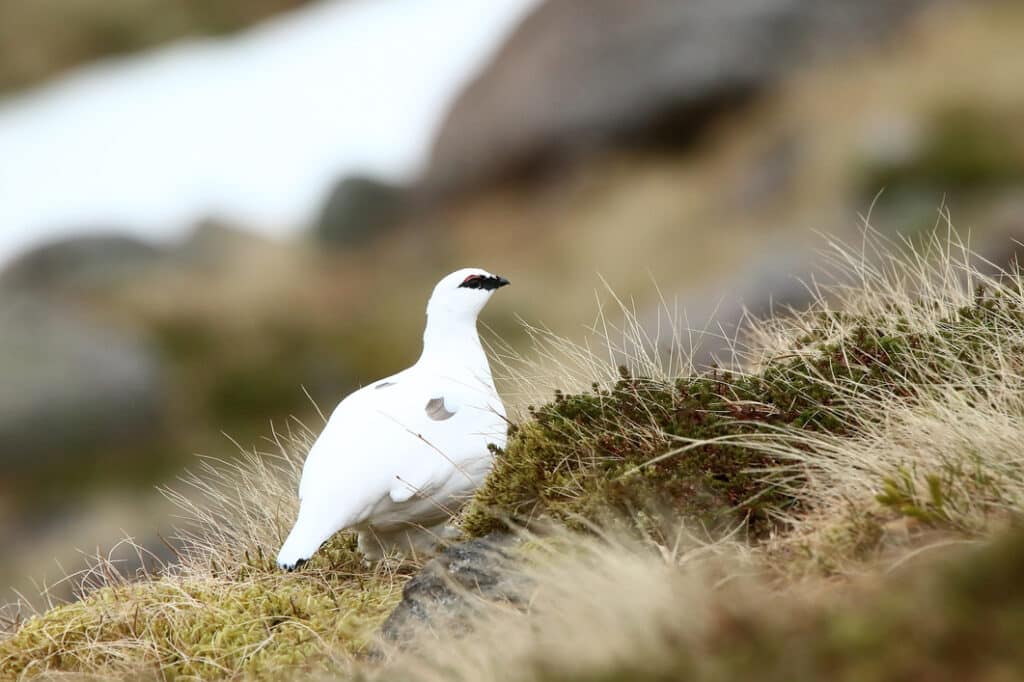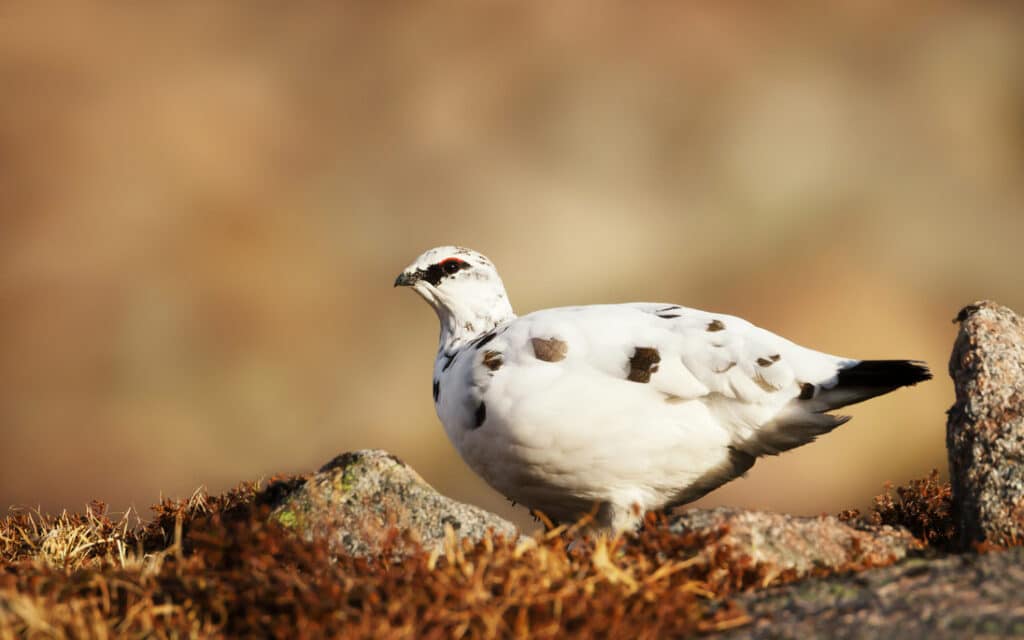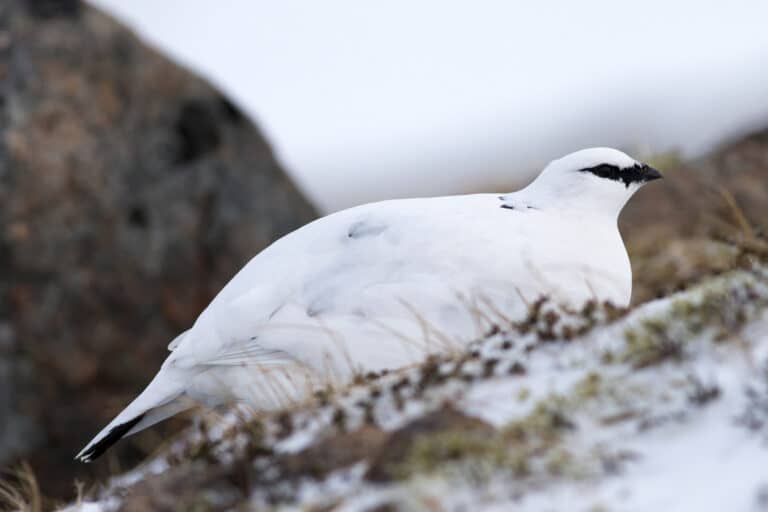Facts about Ptarmigan
Scientific name: Lagopus muta
Bird Family: Grouse
UK conservation status: Red
At a glance
- UK resident, long-term breeding population decline.
- Ptarmigans moult three times a year to match the high-altitude landscape.
- Despite Red-listing in 2021, Ptarmigan can still be legally shot in England, Scotland and Wales between August and December.

Closely related to the Red Grouse, the Ptarmigan (pronounced ‘taa – muh – gn’) is a montane grouse which breeds across Arctic and Subarctic Eurasia and North America (including Greenland) on rocky mountainsides and tundra. They feed on shoots, leaves, leaf buds, berries and insects.
Once more widespread and historically found in the Southern Uplands and the English Lake District (from where they became extinct at the end of the 1700s and in the early 1800s respectively) Ptarmigan are now only found here in the highest mountains of the Highlands of Scotland (a good way to see this bird is to take the Cairngorm Funicular and look around the cafe).
Ptarmigans moult their feathers three times a year to match the high-altitude landscape – a phenomenon which is only seen in a few other species. They move from brown in summer and grey in autumn to a snowy-white in winter.

A specialist species, Ptarmigan have never been especially common here and have been in long-term decline for decades. An 81% decline since 1961 saw the Ptarmigan being moved from a favourable Green-listed species straight to Red in 2021 when the Red List was updated (taking the total number of Red-listed species considered in severe decline and most in need of conservation support to a depressing high of 70).
As with so many of our disappearing birds, there are a number of (human-caused) factors that appear to have impacted the Ptarmigan. Rubbish left by tourists is apparently attracting crows who also eat Ptarmigan chicks. Overgrazing by sheep of scarce vegetation may be an issue still, but much of these remote landscapes are less grazed than in the past. The major concern now has to be climate change: predators will move higher as the mountains become less inhospitable, warming is considered to be one of the main drivers of the general shift of alpine plants to higher altitudes, and a higher snow-line may further fragment and isolate populations. And, of course, there is only so high Ptarmigan can go until they are literally at the top of the mountain.
In a just and empathetic world there would therefore be no shooting of Ptarmigan, but that’s not how shooting works. There is still a shooting ‘season’ running from Aug 12 – Dec 10 and articles are still churning out lines like “shooting pressure has no effect on ptarmigan numbers”, “the elusive ptarmigan – a sporting challenge like no other”, and hunting “ptarmigan could be regarded the most dangerous fieldsport in Britain”. A major ‘sporting company’ says on its website with a grating lack of awareness that “walking steep, rocky, slippery ground and taking your shot under pressure of fatigue is the challenge in shooting these stunning birds.”
If shooters find the going tough after being driven half way up the mountain in a heated vehicle and with a heated room waiting for them in the evening, imagine how a small bird huddling down in the snow finds the conditions.
Climate change will undoubtedly make it easier for shooters to reach these extraordinary birds, hastening their extirpation in the UK even more quickly.

